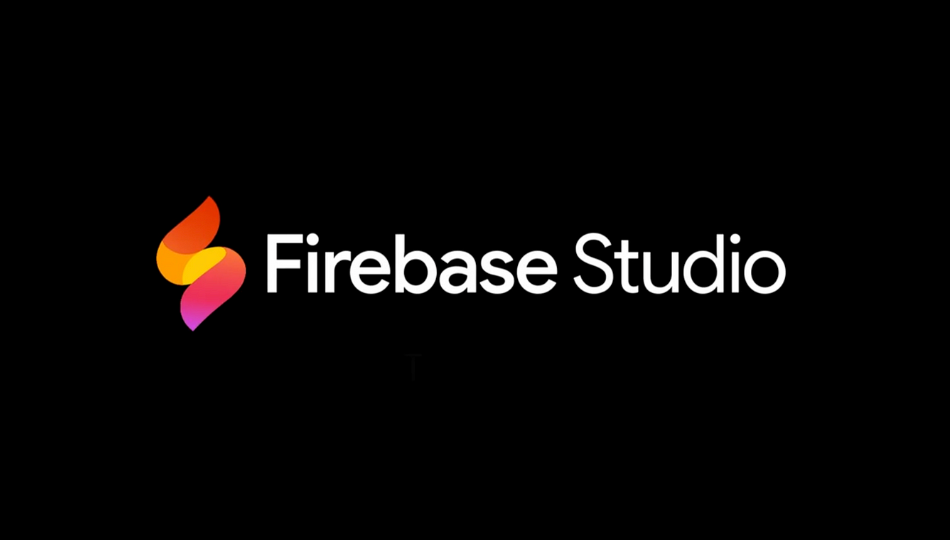Introduction
In today’s fast-paced digital world, the demand for software solutions far outpaces the supply of skilled developers. This gap has fueled the rapid rise of no-code platforms—tools that empower anyone to build functional applications without writing traditional code. Among the newest and most promising players in this space is Firebase Studio, Google’s visual app development environment.
Built on the reliable foundation of Firebase, Firebase Studio offers a streamlined way to design, develop, and deploy apps using a drag-and-drop interface and real-time backend tools. Its part of a broader shift toward democratizing software development, enabling entrepreneurs, educators, product teams, and non-tech professionals to create powerful applications with ease.
This article explores how Firebase Studio fits into the evolving no-code landscape, its standout features, and why it may shape the future of app development for both individuals and organizations looking to innovate quickly.
What Is Firebase Studio?
Firebase Studio is Google’s newest innovation in the no-code development space, designed to simplify the way people build web and mobile applications. Positioned within the Firebase ecosystem, Firebase Studio offers a visual development interface that lets users create functional apps without writing a single line of code.
Unlike traditional Firebase tools, which often require a working knowledge of JavaScript, Firestore, and APIs, Firebase Studio introduces a drag-and-drop builder, pre-configured components, and seamless backend integration. It empowers non-developers—such as entrepreneurs, educators, designers, and students—to bring app ideas to life quickly and visually.
Firebase Studio is tightly integrated with services like Realtime Database, Firebase Authentication, and Firebase Hosting, making it ideal for building dynamic, data-driven apps. Users can design interfaces, connect them to real-time data sources, and deploy to production—all from one unified platform.

Built to reduce time-to-market and lower the technical barrier, Firebase Studio aligns with the global no-code movement, where accessibility, speed, and simplicity are key. Whether you’re prototyping an MVP or building internal tools, Firebase Studio gives you the power of Firebase, without the code complexity.
In short, it’s Firebase—reimagined for everyone.
The Rise of No-Code Development
In the past, building a digital product meant hiring developers, writing thousands of lines of code, and navigating complex technical frameworks. But as technology continues to evolve, so too does the way we build it. Enter the no-code revolution—a transformative movement that empowers people without programming backgrounds to create fully functional applications using intuitive visual tools.
The demand for faster development, reduced costs, and broader accessibility has fueled the popularity of no-code platforms. Whether it’s building a website, launching a mobile app, or automating workflows, no-code tools have made it possible for anyone—from solo entrepreneurs to enterprise teams—to turn ideas into digital products in days, not months.
The rise of no-code isn’t just a trend—it’s a response to the growing talent gap in tech. As startups and small businesses struggle to find skilled developers, no-code tools offer a practical, scalable solution. Platforms like Bubble, Adalo, and Glide laid the groundwork, but now tech giants like Google are joining the race with powerful platforms like Firebase Studio.
By leveraging Firebase’s infrastructure and combining it with a user-friendly visual builder, Firebase Studio marks Google’s serious entry into this space. It brings the power of cloud services, real-time databases, and secure hosting to non-technical users, helping democratize software development.
In a world where digital agility is essential, no-code development is more than a shortcut—it’s a shift in how we think about building technology. Firebase Studio may very well be the next big step in making that shift mainstream.
Core Features of Firebase Studio
Firebase Studio brings the full power of the Firebase backend into a clean, visual environment—perfect for those who want to build modern web or mobile apps without diving into code. Its standout features make it a strong contender in the growing no-code development space.
Drag-and-Drop Interface
At the heart of Firebase Studio is its intuitive drag-and-drop builder, which allows users to visually design user interfaces. You can place elements like buttons, forms, text fields, images, and more—customizing them with simple configuration menus instead of writing HTML or CSS.
Built-in Firebase Integration
Unlike third-party no-code platforms, Firebase Studio is natively connected to Firebase services. This includes seamless access to:
- Firestore or Realtime Database for data management
- Firebase Authentication for secure sign-ins
- Cloud Functions for automation and backend logic
All of this is handled behind the scenes, so users never have to touch complex backend code.
One-Click Hosting and Deployment
Firebase Studio supports instant app deployment. With a single click, users can push their projects live using Firebase Hosting—complete with HTTPS, custom domains, and performance monitoring tools.
Smart Component Logic
The platform allows the creation of conditional logic, data bindings, and real-time updates, making it possible to build dynamic and interactive applications.
Extensibility and Advanced Mode
For developers who want to go further, Firebase Studio offers a hybrid mode where custom code and APIs can be added without disrupting the visual workflow.
Benefits for Different User Types
One of the greatest strengths of Firebase Studio is its versatility—it’s not just for developers. Its no-code interface is designed to empower a wide range of users with different goals and skill levels, making it a truly inclusive tool in today’s digital landscape.
Startups & Entrepreneurs
For early-stage founders and startup teams, time and budget are critical. Firebase Studio enables rapid prototyping and MVP development without needing a dedicated tech team. Founders can visually design and launch apps to validate their ideas quickly, pivot faster based on user feedback, and avoid the high upfront cost of custom development.
Educators & Students
Firebase Studio offers an excellent way to introduce students to app development concepts without the intimidation of coding. It allows educators to teach user interface design, database interaction, and logic workflows through hands-on experience. Students can create functional projects that mirror real-world applications, boosting both confidence and creativity.
Product Managers & Designers
Often stuck between ideas and implementation, product managers and UI/UX designers can now translate wireframes into working prototypes without waiting for engineering resources. Firebase Studio gives them the tools to mock up real experiences, gather stakeholder feedback, and iterate independently.
Corporate Teams & Internal Tool Builders
Businesses often need lightweight internal tools for dashboards, reporting, or inventory tracking. With Firebase Studio, non-technical team members can build these apps internally, improving efficiency and reducing the load on IT departments.
Freelancers & Agencies
For freelancers offering digital services, Firebase Studio can speed up project delivery and expand their service offerings. It’s ideal for creating landing pages, client portals, and lightweight SaaS apps with less overhead.
Firebase Studio vs Other No-Code Tools
As the no-code ecosystem expands, platforms like Glide, Adalo, and Bubble have become go-to tools for users building web and mobile apps without traditional coding. So, where does Firebase Studio stand in comparison?
While all no-code tools aim to reduce development barriers, Firebase Studio differentiates itself by being natively integrated with Google’s Firebase backend, offering superior performance, scalability, and security out of the box. In contrast, platforms like Glide and Adalo focus heavily on ease of use and mobile app simplicity, while Bubble offers a highly flexible, albeit more complex, web development environment.

Firebase Studio also appeals to semi-technical users who want more control over backend logic without writing full-stack code. It provides Google Cloud-grade infrastructure, instant deployment, and tighter integration with services like Firestore, Authentication, and Hosting.
Here’s a quick comparison:
| Feature / Platform | Firebase Studio | Glide | Adalo | Bubble |
| Backend Integration | Native Firebase (real-time) | Airtable/Google Sheets | Built-in DB | Fully customizable DB |
| UI Builder | Drag-and-drop | Drag-and-drop | Drag-and-drop | Advanced drag-and-drop |
| App Types | Web + Progressive Apps | Mobile-first | Mobile-first | Web-first |
| Deployment | 1-click (Firebase Hosting) | Glide Hosting | Adalo Hosting | Bubble Hosting |
| Extensibility | High (add custom code) | Limited | Medium | Very High (JS workflows) |
| Ideal For | Startups, internal tools | Simple mobile apps | Mobile MVPs | Complex web apps |
Limitations and Considerations
While Firebase Studio presents a promising leap in no-code development, it’s important to understand its limitations before fully committing to the platform.
First, scalability for complex logic can be challenging. While Firebase Studio simplifies building basic to intermediate applications, it may not be suitable for large-scale apps requiring intricate business logic, heavy integrations, or custom APIs beyond Firebase’s ecosystem. Users might quickly outgrow the platform and need to transition to a more flexible, code-based framework.
Second, being tied to the Google ecosystem means your app’s backend services—authentication, hosting, and database—are closely coupled with Firebase. While this offers convenience, it also leads to vendor lock-in, potentially limiting flexibility if you plan to migrate later.
Additionally, although the visual interface is intuitive, users unfamiliar with database structures or app architecture might still face a learning curve, especially when setting up real-time data bindings or conditional logic.
Lastly, the platform is still evolving. Features may be limited compared to more mature no-code tools like Bubble or Webflow, particularly in areas like native mobile publishing or advanced animations.
In summary, Firebase Studio is ideal for fast prototyping and small-to-medium apps, but developers should consider future growth and integration needs carefully.
Future Potential: Is Firebase Studio the Future of App Development?
The no-code movement is more than a passing trend—it’s reshaping how software is built, and Firebase Studio is Google’s bold step toward leading this transformation. With the increasing demand for digital solutions across industries, businesses are seeking faster, more accessible ways to bring ideas to life. Firebase Studio could be a key player in meeting that demand.
What makes Firebase Studio particularly promising is its tight integration with Google Cloud and Firebase services. This isn’t just a basic drag-and-drop builder—it’s a visual layer on top of enterprise-grade infrastructure. As Google continues to innovate, we can expect future updates to include AI-assisted design, automated testing, and Gemini-powered code suggestions, further lowering the barrier for non-developers.
Moreover, the rise of citizen developers—non-engineers who build tools to solve real problems—creates a thriving user base for platforms like Firebase Studio. It allows startups to prototype and iterate fast, educators to teach practical app-building skills, and enterprises to streamline internal tool development.
That said, Firebase Studio is still in its early stages. Its success depends on how quickly it evolves to meet advanced development needs while maintaining ease of use. Features like native mobile deployment, third-party API connectors, and advanced logic blocks could make it a complete development solution.
In conclusion, Firebase Studio has the potential to become a central hub in the future of app development. If Google continues to invest and expand its capabilities, it could very well redefine how apps are built by both developers and non-developers alike.
Conclusion
Firebase Studio is a promising tool at the intersection of no-code convenience and robust backend power. By combining Google’s trusted Firebase infrastructure with a user-friendly visual builder, it opens the door for entrepreneurs, educators, and teams to build functional apps quickly—without writing complex code.
While it may not yet replace full-code environments for complex applications, its potential to streamline MVPs, prototypes, and internal tools is undeniable. With continued development, especially around AI integration and extensibility, Firebase Studio could become a central pillar in the no-code ecosystem.
For anyone looking to build apps faster, with fewer resources and less technical overhead, Firebase Studio is a smart platform to watch—and start using.



